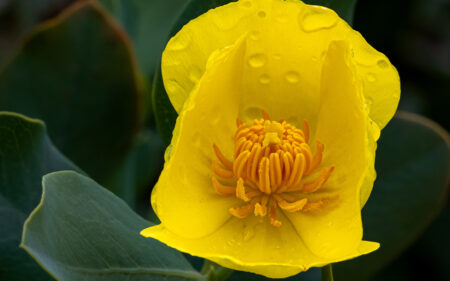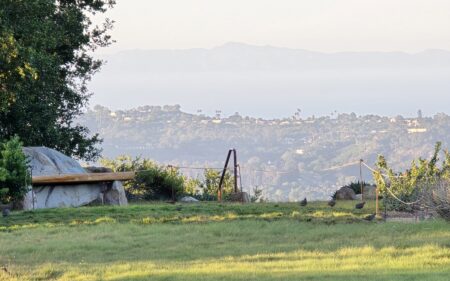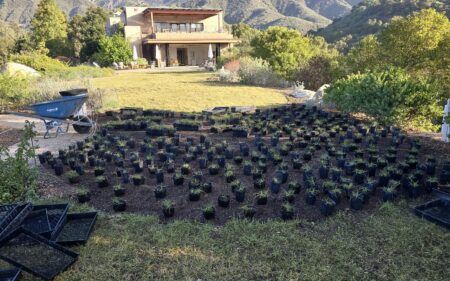Can an Early-blooming Plant Help the Western Monarch?
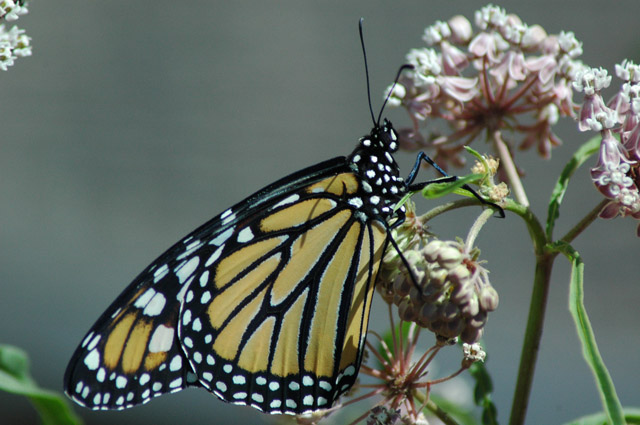
The western population of the monarch butterfly (Danaus plexippus) is at an increasing risk of local extinction, having declined 99% in population size over the last 20 years. Whether their decline is the result of increased pesticide exposure, climate change, or the loss of important habitat is still not clear.
Unique to our part of the world, western monarchs have a remarkable lifecycle. In the fall, adult monarchs arrive in tree groves along the California coast, where they cluster together to conserve energy, rest, and overwinter. Come springtime (February through May), monarchs mate and set out from overwintering groves in search of nearby milkweed (Asclepias spp.) on which they lay their eggs. It is essential that milkweed plants are available during this critical early spring period. Once the first generation has matured, multiple generations of monarchs will slowly migrate northward toward Oregon, Washington, and Canada. Come fall, adult monarchs will make the long, miraculous flight all the way back to groves along the California coast where the cycle will repeat.
The Study of Native Milkweed
Because of the exponential growth of monarch populations over the course of a year, the first clutch of early-spring butterflies effectively determines monarch breeding success for the entire year. Around Santa Barbara, only a few species of milkweed start growing during the critical early-spring breeding period. These include California milkweed (A. californica), woollypod milkweed (A. eriocarpa), desert milkweed (A. erosa), and woolly milkweed (A. vestita). Yet the distribution and abundance of these important plants are not well known.
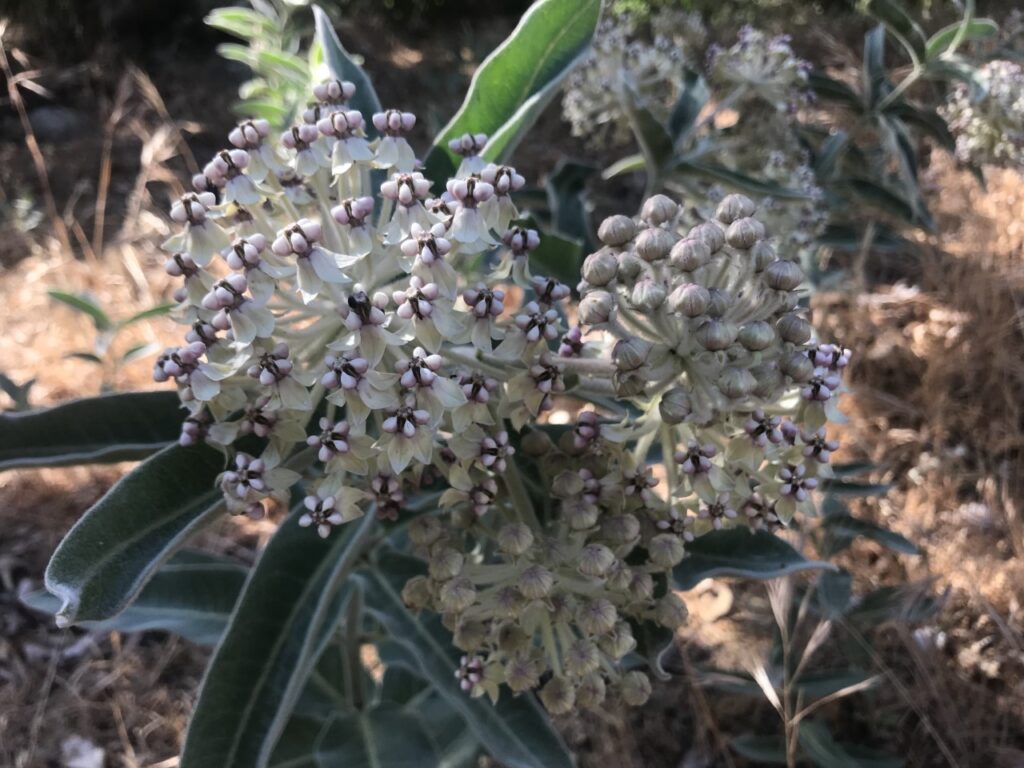
As part of a much larger project to conserve the western monarch, Santa Barbara Botanic Garden is collaborating with the U.S. Fish and Wildlife Service; University of California, Davis; Washington State University; California Central Coast Joint Venture; and others to spend the next two years collecting important information on the health of early-season milkweed stands here in Southern California. During our surveys, we will map the distribution of milkweed populations across the Los Padres National Forest (LPNF), collect essential seed material for future restoration efforts, and take leaf samples to measure the exposure of butterflies to pesticides. Along with providing information about the distribution and abundance of early breeding habitat for western monarchs, our surveys will also inform LPNF’s management and protection of early breeding habitat.
How You Can Help
If you want to help early-season monarch populations, you can plant native milkweed and nectar plants, but depending on where you live, the recommendations vary. Because milkweeds do not historically occur along the coast, their presence may confuse overwintering monarchs into breeding during the wrong time of the year. Experts recommend that if you live within 5 miles (8 kilometers) of the coast, you should avoid planting milkweed but focus on planting nectar plants for the adult butterflies. If you live inland, you can plant native milkweed as breeding habitat as well as nectar plants to feed the adult butterflies. Native Ceanothus, Encelia, Eriogonum, Eschscholzia, Hazardia, Helianthus, Horkelia, Isocoma, Lasthenia, and Verbena species, among others, are all good nectar plants. No matter where you live, avoid planting the nonnative tropical milkweed (A. curassavica). Tropical milkweed, which does not die back during the winter, provides year-round habitat for the Ophryocystis elecktroscirrha (OE) parasite that can negatively impact monarch larvae.
 Donate
Donate
